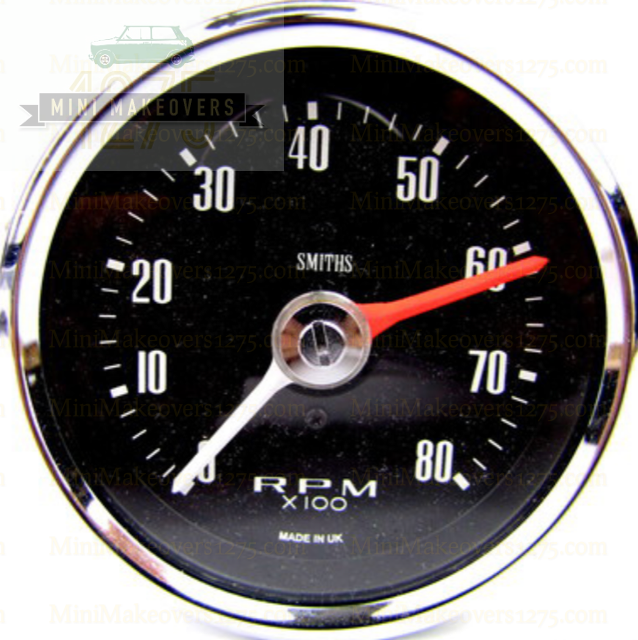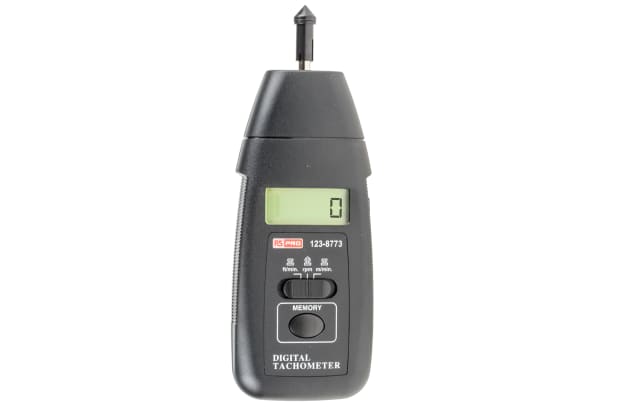Tachometer Basics: Everything You Need to Know for Accurate Readings
Tachometer Basics: Everything You Need to Know for Accurate Readings
Blog Article
The Importance of a Tachometer in Keeping An Eye On Engine Rate and Performance in Automotive Applications
In the world of automotive engineering, the tachometer stands as a pivotal tool in the vehicle driver's arsenal, providing a straight window into the inner operations of a vehicle's engine. Beyond its function as a plain scale of changes per minute (RPM), the tachometer serves as a vital device for enthusiasts and professionals alike, offering real-time understandings into engine efficiency and health.
Importance of Monitoring Engine RPM
Keeping track of engine RPM, or changes per min, is a critical aspect of vehicle upkeep and efficiency analysis. Engine RPM directly associates with the speed at which the engine's crankshaft revolves, suggesting exactly how quickly the engine is running - tachometer. By checking RPM, mechanics can assess the health and wellness of the engine, find possible concerns, and fine-tune efficiency. An abnormal RPM analysis might signal troubles such as engine misfires, defective stimulate plugs, or problems with the fuel distribution system. Continually high RPM analyses could suggest aggressive driving practices or the demand for a higher gear change to enhance gas efficiency.
Moreover, keeping an eye on engine RPM is vital for efficiency analysis in racing and high-performance vehicles. In recap, checking engine RPM is not only important for finding problems but also for maximizing engine performance in numerous vehicle applications.

Benefits of Real-Time Data
In automobile applications, real-time data plays a crucial role in providing immediate insights right into the efficiency and problem of the automobile. By constantly keeping an eye on numerous criteria such as engine speed, temperature level, gas consumption, and more, real-time data supplies numerous advantages that add to enhanced performance and safety when traveling.
One significant advantage of real-time information is its capability to alert motorists and technicians to any abnormalities or concerns quickly. This positive approach enables fast recognition of possible problems, enabling for timely interventions to avoid further damages or break downs. Furthermore, real-time data helps with performance optimization by providing prompt responses on driving habits and engine efficiency. Chauffeurs can change their actions in real-time based on this info to attain much better fuel economy and lengthen the life expectancy of their lorry.

Additionally, real-time data plays a crucial function in modern-day auto diagnostics, enabling specialists to quickly detect and attend to breakdowns. This results in reduced downtime, lower maintenance prices, and eventually, improved overall lorry reliability and long life (tachometer). By utilizing the power of real-time information, automobile stakeholders can make informed decisions that positively influence both the efficiency and long life of the car
Effect on Gear Shifts
Efficient gear shifts in automotive applications considerably affect total performance and driving experience. The tachometer plays a critical role in optimizing equipment changes by providing real-time engine speed data to the driver. When coming close to the redline on the tachometer, it signals the chauffeur to upshift to stop over-revving the engine and causing possible damage. On the other hand, downshifting at the ideal moment can aid keep the engine in its power band, guaranteeing responsive velocity when needed.
In addition, the tachometer help in attaining smoother gear transitions, imp source particularly in hand-operated transmissions. By monitoring engine speed, chauffeurs can carry out equipment shifts at the optimal RPM variety, decreasing snagging motions and minimizing wear on the transmission elements. This precision in equipment changes not only enhances driving convenience yet additionally adds to fuel effectiveness.
Enhancing Gas Efficiency
Offered the critical function the tachometer plays in optimizing equipment shifts for efficiency and engine wellness, it straight adds to maximizing gas performance in automobile applications. By providing real-time responses on engine speed, the tachometer aids vehicle drivers in preserving one of the most efficient RPM range for fuel economic situation. When drivers continually keep an eye on the tachometer and change their driving routines as necessary, they can prevent unnecessary gas intake triggered by over-revving or carrying the engine.
Additionally, the tachometer assists vehicle drivers recognize the most fuel-efficient equipment to be in at any kind of given moment, preventing the engine from working more challenging than essential. In final thought, the tachometer offers as a beneficial device in improving gas performance by promoting optimum driving practices and identifying locations for renovation in the car's efficiency.

Making The Most Of Engine Long Life
The tachometer's function in keeping track of engine rate and performance is important in making certain the longevity of automotive engines. Monitoring the tachometer permits chauffeurs useful content to remain within the recommended RPM variety for their car, avoiding unneeded stress on the engine and expanding its lifespan.

Verdict
Finally, the tachometer plays an essential duty in keeping an eye on engine speed and performance in automotive applications. By supplying real-time data on RPM, it enables efficient equipment changes, improved gas efficiency, and optimized engine longevity. This view it device is important for keeping optimal engine performance and making certain the overall performance of a vehicle.
Report this page